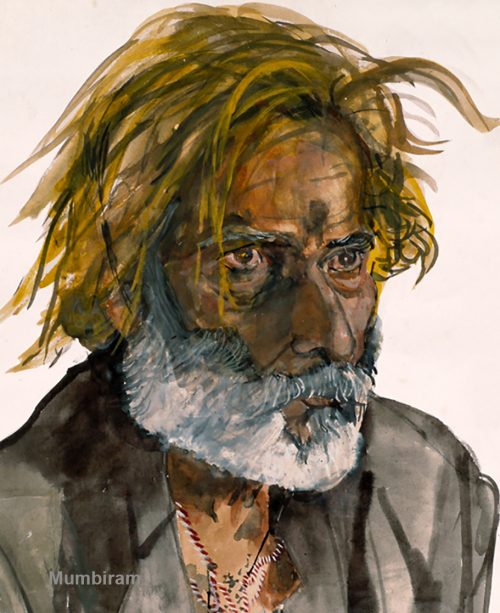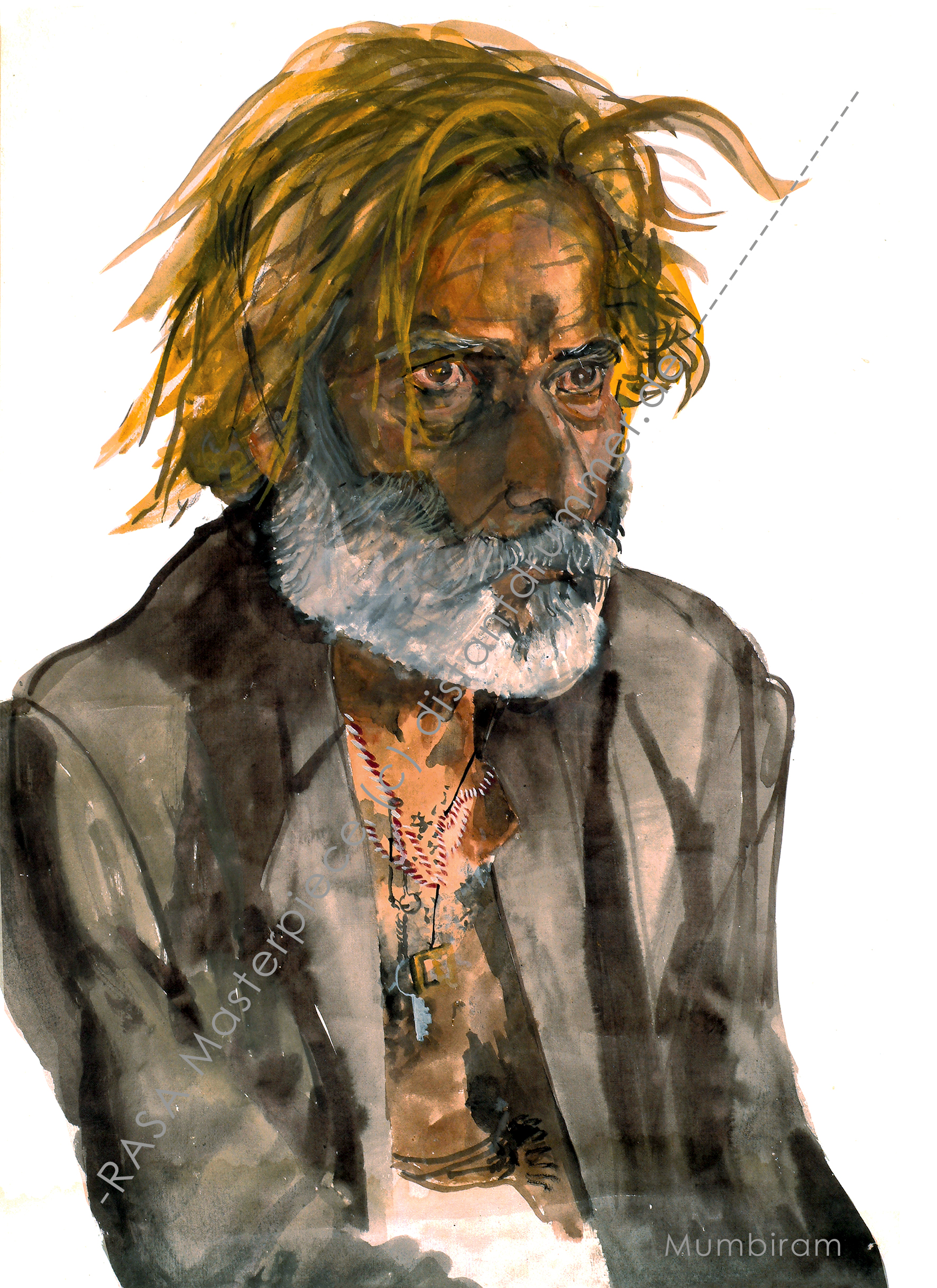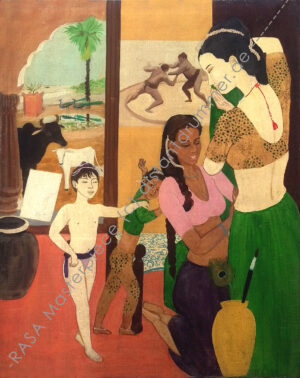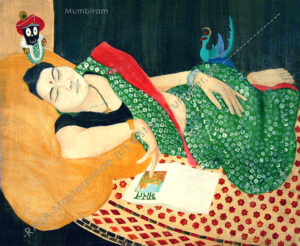““Surprise Meeting on the Way back from the River” – Rasa Masterpiece” has been added to your cart. View cart
“Lakhuji Cartpuller – (Who is afraid of Friedrich Nietzsche ?)”- Rasa Masterpiece
1.200,00 €
incl. 7% VAT plus Shipping Costs
Rasa Masterpiece “Lakhuji Cartpuller – (Who is afraid of Friedrich Nietzsche ?)” by Mumbiram
A Flagship of Rasa Renaissance
-
80 x 110 cm
Collector’s Item
High Quality Canvas Print
individually signed by Mumbiram
Description
Collector’s Item Canvas Print of Original Masterpiece “Lakhuji Cartpuller – (Who is afraid of Friedrich Nietzsche ?)” by Mumbiram
Lakhuji cartpuller, adored by the rag-pickers, inspiration of the artist, like a transparent rendering out of earthy gouache colours, he was handsomely unknown all his days.
80 x 110 cm
High Quality Canvas Print
individually signed by Mumbiram
This is a collector’s item and you will get your Rasa Masterpiece individually signed by Artist Mumbiram.
Rasa Appreciation of original masterpiece “Lakhuji Cartpuller – (Who is afraid of Friedrich Nietzsche ?)” by Mumbiram
“Lakhuji Cartpuller – (Who is afraid of Friedrich Nietzsche ?)”
(Gouache watercolours, 1985, Mumbiram)
Lakhu was born in Karachi, now in Pakistan. As a young man Lakhu left Karachi to escape the Hindu-Muslim carnage that took place during the partition of India in 1947. Mumbiram met Lakhu for the first time in 1985 one day in the early morning hours in the Mandai Market place near Mumbiram’s atelier. Mumbiram has recounted that meeting in some detail some years later. Lakhu was in a state of wild excitement. He was carrying a broom in his hand which he held high as he made wild and loud pronouncements that were nearly incomprehensible. Mumbiram was reminded of Nietzsche’s ‘Mad Man in the Marketplace’, who pronounced that God is dead. Beginning that first meeting Mumbiram and Lakhu developed a very close friendship that Mumbiram has recounted in the article ‘Who’s afraid of Friedrich Nietzsche?’ published in the Pune Digest in 1989. Ironically Lakhu, who left Karachi to escape from Hindu-Muslim riots, died in a minor Hindu-Muslim riot in the slums of Pune at the hands of youth who mistook him for a Muslim. Mumbiram was inspired to write the article to pay his tribute to this very precious friend that he had lost.





